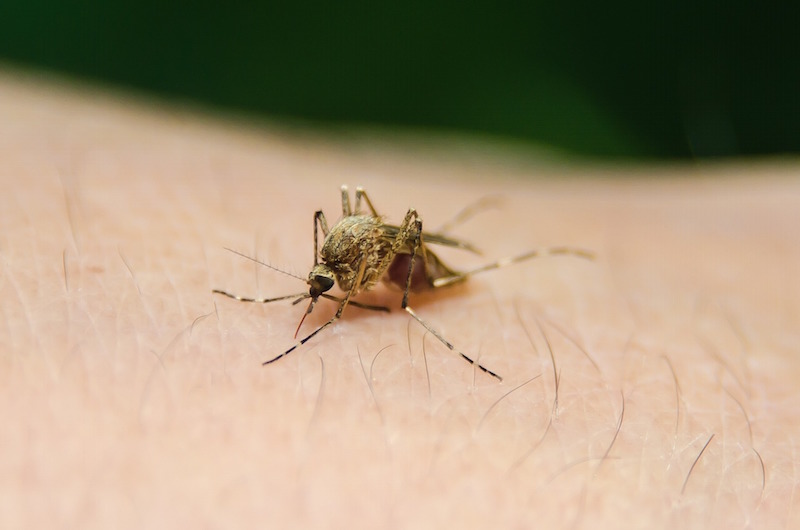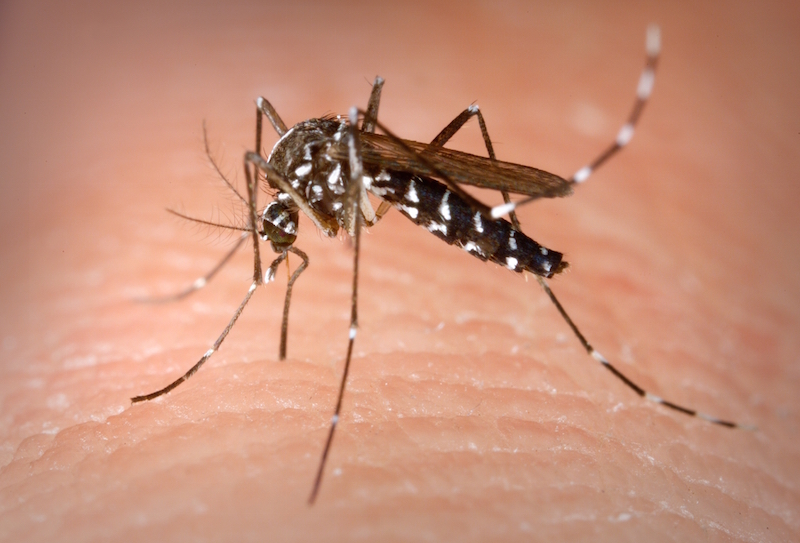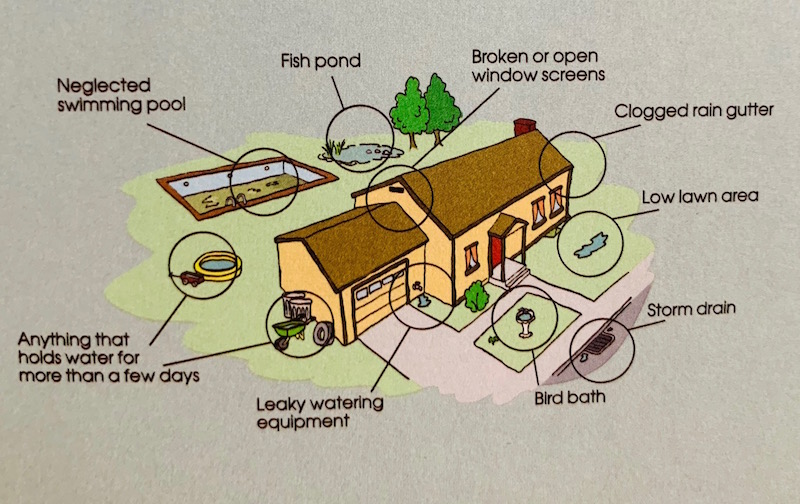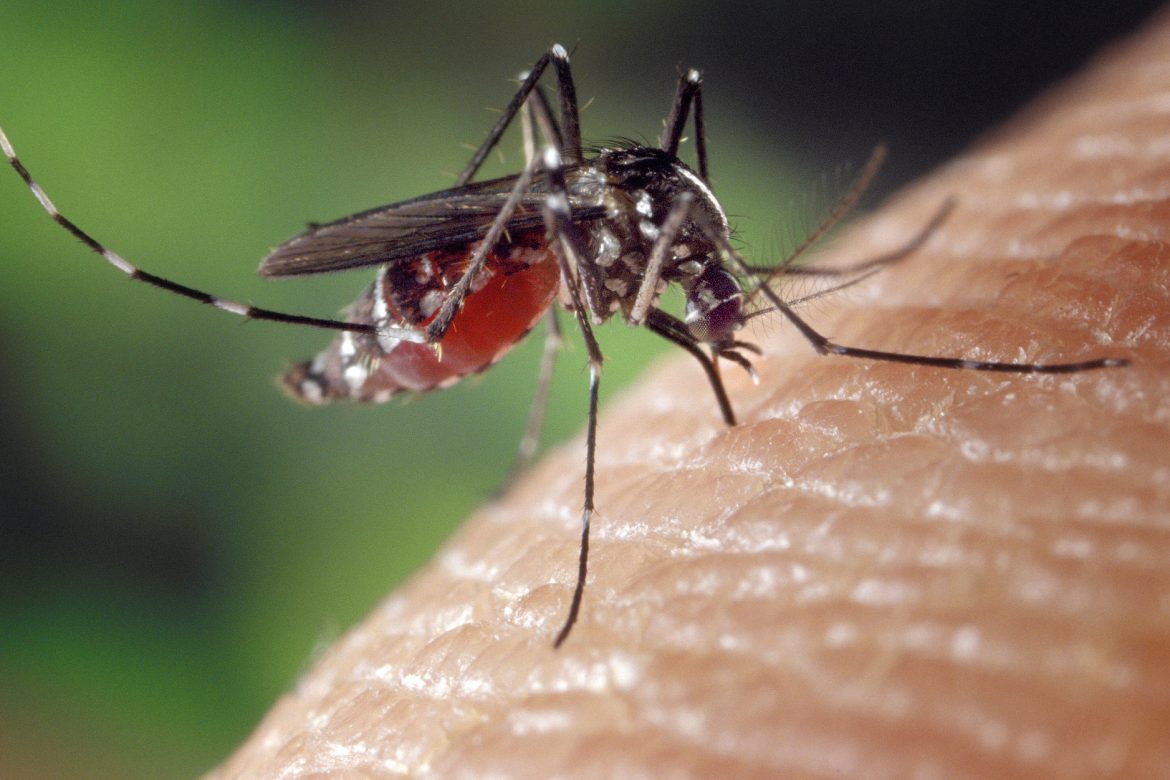Currently, in Contra Costa County, there are three invasive mosquito species that can transmit Zika, dengue, yellow fever and chikungunya. Here is some information about the mosquito species you should look for and how you can be proactive and prevent them from invading your home.
- Yellow Fever Mosquito: These mosquitos have a worldwide distribution in tropic and subtropical areas and has recently been found in different locations throughout California. They are small, dark mosquito with a white violin-shaped marking on its back and banded leg and have the ability to transmit dengue fever, chikungunya, yellow fever and other viruses.

Source – PHIL, CDC
Author – James Gathany - Western Tree hole Mosquito: This is a local species looks very similar to the Asian Tiger Mosquito but lacks the white stripe on the back.

- Asian Tiger Mosquito: These mosquitos are native to Asia and was reintroduced to Los Angeles County in 2011 and has spread throughout neighboring areas. They are small, dark with a white stripe on its back and banded legs and have been found to transmit the following diseases:

- dengue
- chikungunya
- yellow fever
- West Nile
- Eastern equine encephalitis
- Japanese encephalitis
- dog heartworm parasites.
Both species of mosquitos are aggressive daytime biters that feed indoors and outdoors. Their peak feeding times are early in the morning and late afternoon but can be found biting their victims anytime during the day.
Common Places Where Mosquitoes Lay Their Eggs

The number one source for mosquito production is your backyard. If you have anything in your backyard that can hold water for more than a few days then it has the ability to produce mosquitos with the exception of Pools that are regularly filtered and chlorinated. Some of these breeding areas can be:
- Plant sauces
- Buckets
- Bird baths
- Rain barrels
- Septic tanks
- Tires
- Toys
- Pet bowls
- Wheelbarrows
- Cemetery Vases
- Treeholes
- Plant axils (where the leaf meets the stem)
Are You Raising Mosquitoes?

The lifecycle of a mosquito is completed in standing water. During the warm summer months, a mosquito can mature from egg to adult in just five days. They may be breeding in your backyard pond, animal troughs or neglected swimming pools.
During the summer months, these areas should be checked for mosquito breeding. If worm-like creatures at the surface of the water, take a closer look to see if they are mosquito larvae.
How to Prevent Mosquitoes from Coming Around
- Ensure you do not have any standing water around your home
- You can use mosquito repellents that contain 30-50% DEET for adults and products with a concentration of no more than 10-30% for children over 2 months
- Avoid wearing clothes that are dark in color as it keeps your body warm and mosquitoes are attracted to warm bodies
- Avoid wearing heavy fragrances as mosquitoes are attracted to scents mixed with the human sweat
- Use essential oils such as lemon eucalyptus oil, lavender, cinnamon oil, thyme oil, citronella oil or tea tree oil.
CALL A PROFESSIONAL
If you are unsure of the effectiveness of your pest prevention and management reach out to your partners at Aantex. Our highly trained and knowledgeable pest control technicians can come and assess your any problem and determine the best strategies to eliminate your pest problem and protect your home from future infestations
AANTEX Pest Control offers a variety of free inspections and serves the entire Bay Area.
Call us at 925-240-5100 to schedule your pest control consult today.
Source for this article: https://www.contracostamosquito.com/invasive_mosquito_species.htm


